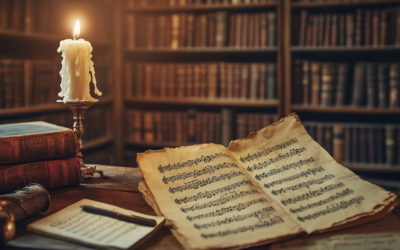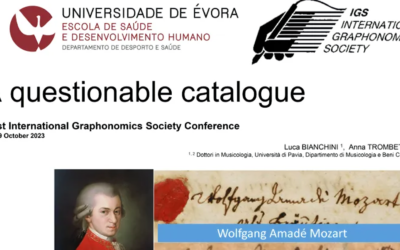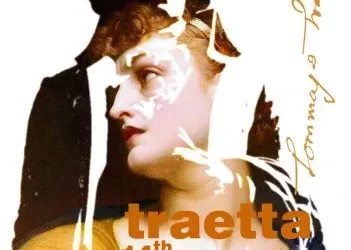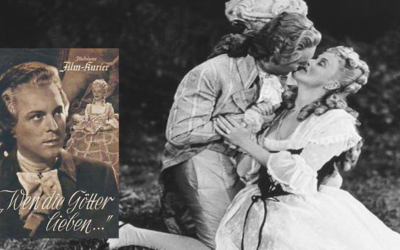The Nationalistic Roots of the Philharmonic
Music in Service of the Third Reich
In 1943, Nazi Propaganda Minister Joseph Goebbels produced Die Philharmoniker, a film designed to glorify the Reich’s national orchestra. Under state ownership since 1933, the Berliner Philharmoniker became an emblem of Nazi Germany, portraying the nation’s “pure” musical heritage.
The orchestra, directed by Wilhelm Furtwängler and others, exclusively performed a curated selection of German composers, avoiding foreign works deemed “mediocre.”
Behind this cultural project lay a deep-seated nationalist agenda, one that reframed history to elevate German composers as the rightful heirs of musical supremacy.
Mozart: The Fall of the Gods
This book compiles the results of our studies on 18th-century music and Mozart, who has been revered for over two centuries as a deity. We dismantle the baseless cult of Mozart and strip away the clichés that falsely present him as a natural genius, revealing the contradictions in conventional biographies. In this work, divided into two parts, we identify and critically analyze several contradictory points in the vast Mozart bibliography. Each of the nearly 2,000 citations is meticulously sourced, allowing readers to verify the findings. This critical biography of Mozart emerges from these premises, addressing the numerous doubts raised by researchers.
"German music is for me sacred; it alone poses and resolves the mysteries of the world."
Mozart: The Fall of the Gods
In the 1943 film Die Philharmoniker, Joseph Goebbels aimed to showcase the Reich’s orchestral prestige. The Berliner Philharmoniker, absorbed by the German state following the Nazi rise in 1933, operated under direct government control. The orchestra’s service was considered civil duty, overseen by the Ministry for Public Enlightenment and Propaganda. This arrangement was not coincidental; it was part of an orchestrated cultural movement designed to depict German music as the superior legacy of a powerful and “purified” nation.
Under Goebbels’ ownership, the Berliner Philharmoniker became a well-oiled propaganda machine. No detail was overlooked, and the orchestra accompanied key Nazi events—from Hitler’s birthday celebrations to the 1936 Olympic Games opening. Music, in this context, was no longer a mere art form; it was the embodiment of an idealized German essence, one thought to unify the nation, fortify morale, and inspire a belief in Germany’s supremacy. Meanwhile, Hermann Göring maintained control of the nation’s state theatres, fostering a similarly narrow focus on “pure” German productions.
Germanic Music and the “Trinity of the Viennese Classics”
Goebbels’ ideal conductor, Wilhelm Furtwängler, upheld a repertoire aligning with the party’s ideology, keeping works by Haydn, Mozart, and Beethoven firmly in the spotlight. These three formed what Nazi musicologists hailed as the “Wiener Klassik” or “Viennese Classicism.” More than 70% of Furtwängler’s performances under the Third Reich centered around these composers, alongside German luminaries such as Brahms, Strauss, and Bruckner. Foreign composers were conspicuously absent, with Hitler’s rhetoric dismissing them as “petty shopkeepers” unworthy of standing before Germany’s grand musical throne.
When asked about the steadfast presence of Mozart and others in his repertoire, the Furtwängler character in Die Philharmoniker replied that his choices were neither those of a “curious wanderer” nor a “scholar with mere academic interests.” Instead, he professed a love for “great works,” explaining that he performed them simply for their inherent beauty, warmth, and inspiration. This was German music’s ordained narrative—a “sacred” heritage of unparalleled profundity.
The Roots of Viennese Classicism
“Viennese Classicism” as a concept predated the Nazi era, but its nationalist overtones were pronounced by the Third Reich. Originally crafted by Austrian nationalist Raphael Georg Kiesewetter in the 19th century, the term had aimed to cement the supremacy of German-Austrian composers, conveniently disregarding classical contributions from French and Italian composers. The label became a tool of cultural defense, a rallying point for those seeking to assert German music’s dominance against the rising popularity of Italian opera and French influences during the early 1800s.
The foundations of this fabricated “classic” period can be traced back to Christian Friedrich Daniel Schubart, who in the late 18th century declared that Haydn’s compositions had “created a new era.” Later, Ernst Theodor Amadeus Hoffmann echoed this sentiment, citing Haydn, Mozart, and Beethoven as pioneers of a “new art” and suggesting that their work represented the pinnacle of musical evolution.
As these sentiments gained traction, composers and critics alike joined the nationalist cause, reinforcing the notion that Haydn, Mozart, and Beethoven were the undisputed founders of a “German school” of music. The fervor peaked with Johann Amadeus Wendt, who claimed that this supposed German period represented “the basis of true musical enjoyment in Germany.” Kiesewetter later reinforced this view, declaring that their “perfection” elevated them as models for all German composers, supposedly inspiring “every field” of music to its greatest heights.
Haydn, Mozart, Beethoven: A Nationalist Trinity
The Nazi narrative immortalized this trinity as the venerated cornerstone of German music, with Bach serving as a revered forebear. Yet this lineage was a product of careful myth-making—a constructed genealogy aimed at sidelining external influences and elevating German music as the ultimate heritage. Kiesewetter’s classification, driven more by national pride than musicological accuracy, omitted the considerable European and Italian influences that shaped these composers.
Conclusion:
The Berliner Philharmoniker, under Nazi control, was not merely an orchestra but a cultural weapon. The fabricated history and curated concert repertoire promoted by Goebbels’ propaganda machine served to reinforce a vision of German musical “purity.” This engineered lineage—anchored in the mythologized legacy of Haydn, Mozart, and Beethoven—supported the Third Reich’s ideology, presenting German music as the supreme, enduring inheritance of a powerful nation. In reality, however, the concept of a “German school” of music had been forged in the fires of nationalism, overlooking the many non-German influences that enriched these celebrated works.
You May Also Like
K.143: A Recitative and Aria in the Shadows of Doubt
K.143 is a prime example of how Mozart scholarship has turned uncertainty into myth. With no definitive evidence of authorship, date, or purpose, this uninspired recitative and aria in G major likely originated elsewhere. Is it time to admit this is not Mozart’s work at all?
The Enigma of Mozart’s Symphony K.73
The Symphony in C Major K.73 has long puzzled Mozart scholars. Touted as a youthful work of prodigious talent, its origins are murky at best. The title “Symphony,” inscribed on the first page of the autograph, is devoid of the composer’s name, casting immediate doubt on its attribution to Wolfgang Amadeus Mozart. Was this truly his work, or is the Symphony yet another victim of overzealous attribution?
Mozart’s Thematic Catalogue Exposed as a Forgery
A groundbreaking forensic analysis reveals that Mozart’s thematic catalogue, long thought to be his own work, is a posthumous forgery. This discovery, detailed in Mozart: The Construction of a Genius, turns centuries of Mozart scholarship on its head, demanding a re-examination of his legacy.
Bologna Connections
Quirino Gasparini’s rediscovered Mitridate aria takes centre stage in Bern and Basel, shedding light on Mozart’s reliance on this forgotten composer.
International Traetta Award
We are thrilled to announce that the 14th International Traetta Award has been bestowed upon Anna Trombetta and Luca Bianchini. This prestigious recognition honours their outstanding dedication to musicological research on primary sources of the European musical repertoire, offering significant contributions to reshaping the historiography of 18th-century music.
A Legacy Rewritten by the Shadows of History
Mozart’s image, often regarded as a universal symbol of musical genius, was heavily manipulated by the Nazi regime, a fact largely ignored in post-war efforts to “denazify” German culture. From propaganda-driven films to anti-Semitic narratives, Mozart’s legacy is far more complex and troubling than we are often led to believe.







